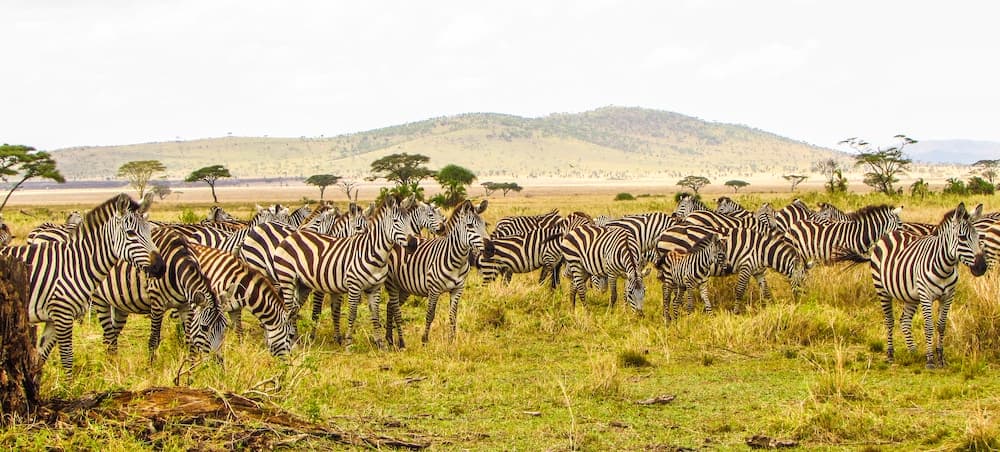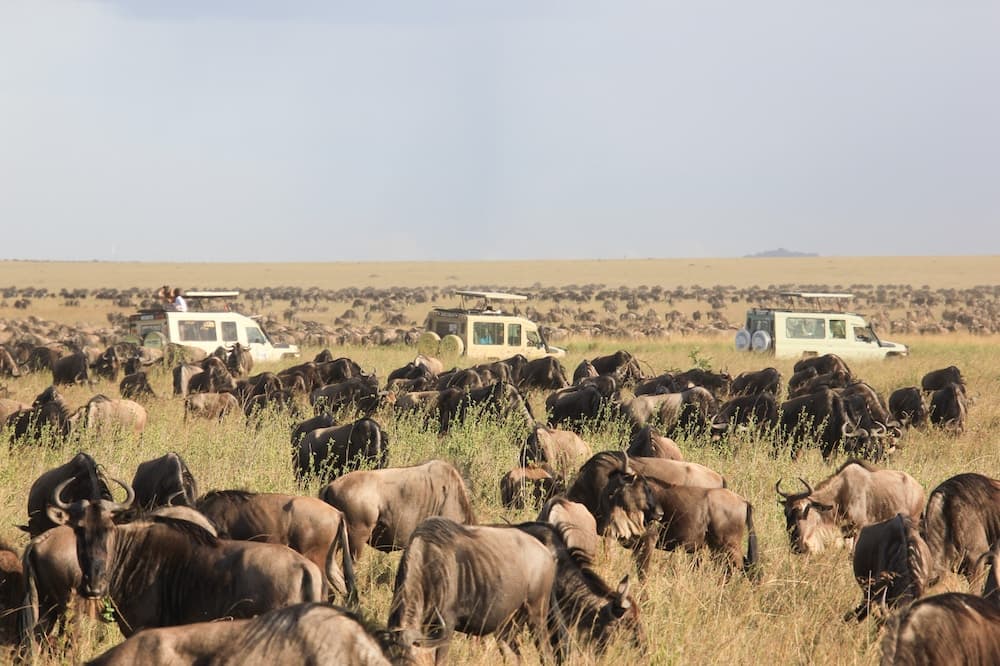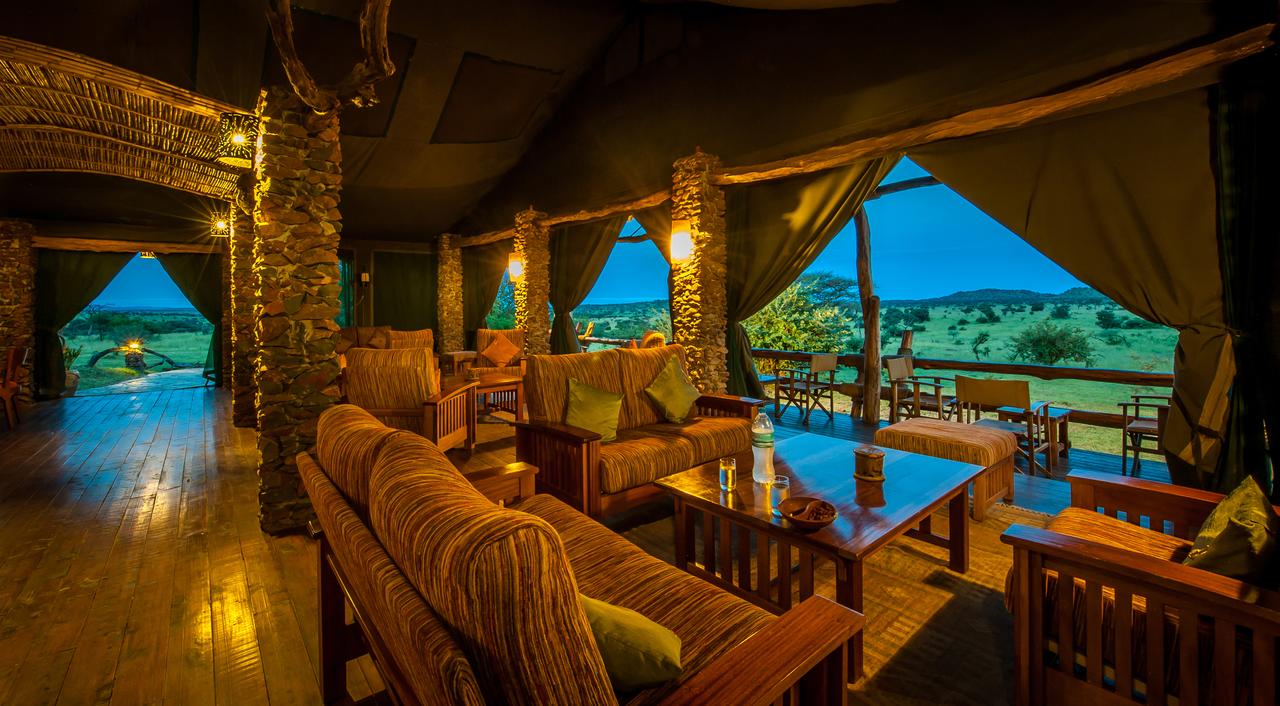The Serengeti
Disclosure: Bear in mind that some of the links in this post are affiliate links and if you go through them to make a purchase we will earn a commission at no additional cost to you. We chose these companies / hotels because of their quality and not because of the commission we receive from your purchases.
A visit to the Serengeti is a "must" when you travel to Tanzania. It is East Africa's most famous national park, and with more than 14,000 km2 of protected area, it is also one of the largest. The Serengeti has wide, unending grasslands and is known for its spectacular sunsets. The park also offers the biggest wildlife population in the whole of Africa.
The Serengeti is due to the great distances best to visit by safari car, in which a qualified tour guide is mandatory. A visit to the Serengeti is at least two to three days but we would certainly spend more days. The area is very big and has a special diversity of landscapes. The extra height in some areas gives you the opportunity to see the vast plains from a different perspective. 
The Serengeti is famous for the annual migration of hundreds of thousands of wildebeest, zebras and gazelles. Nowhere in the world do animals migrate from one place to another like in the Serengeti. Plan your trip to the endless grass plains during the great trek, and be a witness of mother nature. One and a half to two million animals migrate in a large circle over the vast steppes, looking for fertile lands for grazing. The enormous herds of wildebeest, zebras and gazelles are followed closely by hungry lions and hyenas, who in turn are looking for a weak prey. The migration is a beautiful sight and with a bit of luck you can witness it.
The cycle begins on the slopes of the Ngorongoro crater, where tens of thousands of calves are born in a few weeks. The animals then leave behind the rain showers. The trip around the Serengeti takes exactly one year, but due to climate change, it has become increasingly difficult to predict migration in recent decades.
How to get there
For a visit to the Serengeti you can best travel via Kilimanjaro International Airport. From there fly to the town of Arusha, which is the base for safaris in this part of Tanzania. From Arusha to the Serengeti it is still 8 hours, but the ride there is extremely beautiful.
Another more budget and climate friendly option is to travel by bus from Nairobi in Kenya.The driving distance between Nairobi and Serengeti is about 360 km and takes about eight hours from A to B. After having arrived in Nairobi take a local shuttle bus to Arusha (about five hours drive). Be sure to check in advance if you will require a visa for passing through the Kenya/Tanzania border.
Recommended Safari Tours
7-Day Group Safari in Tarangire, Serengeti, Ngorongoro and Manyara. This affordable and popular tour takes you through almost all the highlights of Tanzania in 7 days. With 31 positive reviews this tour won't let you down.
5-Day Exciting Camping Safari in the Serengeti and Ngorongoro Crater. For an intense nature experience, this 5-day camping safari is an excellent choice, with many positive reviews as well.
10-Day 10-Day Authentic Camping Safari in Tanzania. For those with more time, this 10-day safari offers a extensive and unforgettable experience in some of Tanzania's most beautiful parks.
Where to stay
It is situated on a hill and offers a breathtaking view over the plains. Grumeti Migration Camp is conveniently located on the migration route, allowing you to see wildebeest, zebras and gazelles passing directly opposite the property's grounds.

Grumeti Migration Camp is an eco-lodge where the key philosophy is sustainable travel and “active conservation of the natural habitat.” The camp makes as much use of solar and wind power as possible, and is working towards sustainable practices in all other aspects of its operation.
Best time to visit
The best time to visit Tanzania and the Serengeti is from May to September. It is not too hot in this period and you can often see more animals because there is less green and they gather at water places to drink. From March to early May is rainy season. Roads can be difficult to walk, but it is a lot quieter in the parks. Also expect a lot of green and little dust. In November and December there is another short rainy season. Click here for the average weather in Arusha.